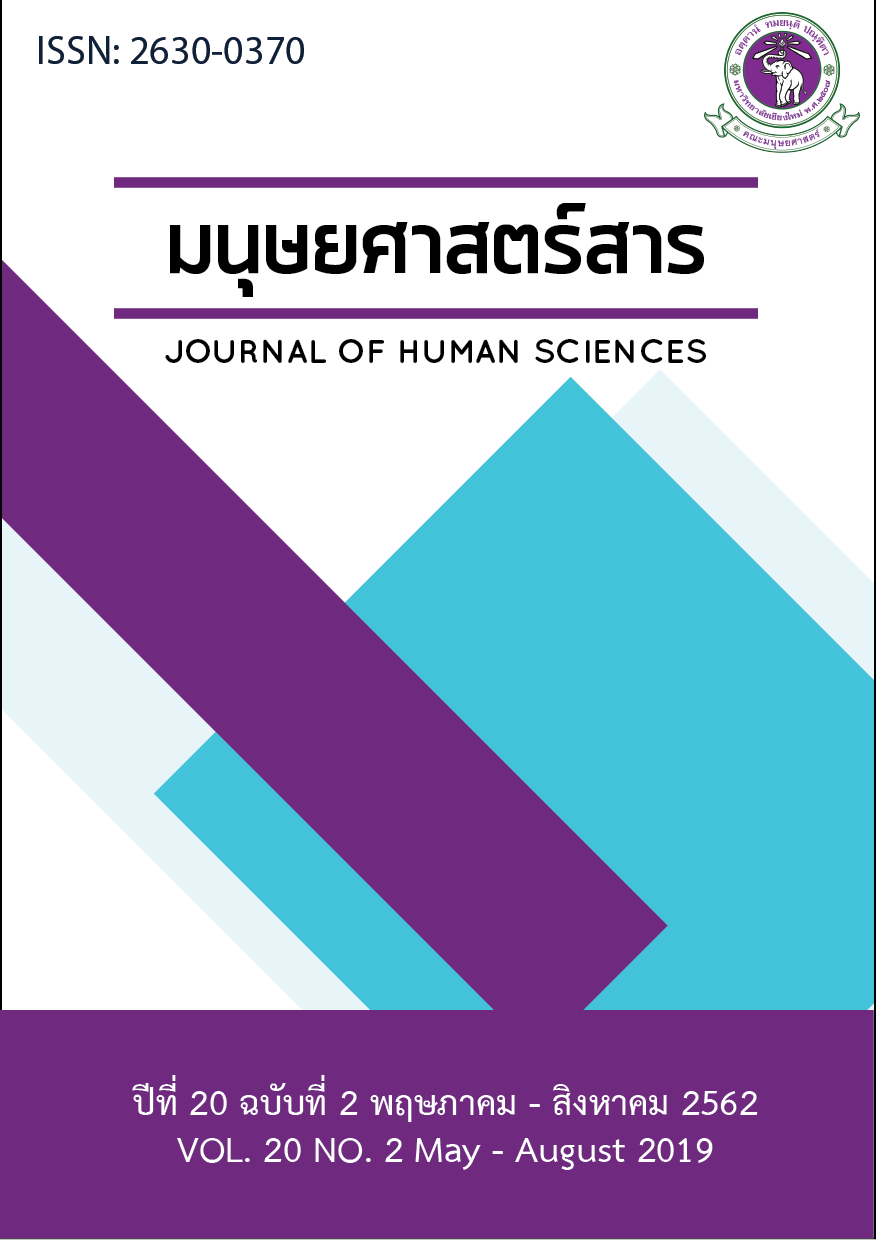The Development of Integral Tourism Marketing Plan for Establishing Chiang Rai Province as a Tourism Hub of Lanna Civilization through the Tourist Behavior and Perception of Tourism Public Relations Media
Main Article Content
Abstract
The objectives of this research are: 1) to study the tourist behavior of tourists on the relationship with the tourism links of Lanna civilization. 2) To study the perception of media, tourist information, and tourism related to Lanna civilization. 3) the development guidance of media relations for tourist relations with tourists. Lanna civilizations and 4) Develop integrated tourism marketing plan to create Chiang Rai as links for tourism of Lanna civilization. Conducted research with mix methodology research. The literature review, interviews, polls 400 Thai tourists and 400 foreigners. The research found the tourist behavior of tourists on the relationship with the tourism links of Lanna civilization. The tourism behavior of tourists who come to Chiang Rai are mostly female. Most Thai tourists are students. Most Chinese are businessmen. Both groups are in the Generation Y era. Most non-Chinese foreigners are private-sector employees in Generation X. Most tourists travel by themselves from Chiang Mai and Bangkok. Choose to stay in the city of Chiang Rai, the purpose of the trip is for fun. entertainment, rest the body and brain. While foreign non-Chinese tourists The purpose is to study culture and knowledge as well. The perception of media, tourist information, and tourism related to Lanna civilization. The research found the public relations media influenced the decision to travel to the overall tourist is "person" The next is the media website. And mouth to mouth Information needed for tourists to decide at least three tourist attractions. The path and method of access and accommodation by the content in the media relations must be easy to understand and attractive. The interconnectedness of experiences during the journey is a cultural experience that is linked from one tourist attraction to another, especially to the experience and learning the way of life. Of local people with access to a safe, comfortable travel destination, and offering more than one travel experience. The development guidance of media relations for tourist relations with tourists. Lanna civilizations. The research found recommend local products. It led to the development of tourism marketing plan linking Lanna civilization of Chiang Rai. The aim is to experience a variety of Lanna civilizations in Chiang Rai. Northern provinces and neighboring countries. With the strategy to create a tourism experience Lanna civilization and the difference. In the field of marketing activities, the network linking Lanna civilization tourism route. Artistic pricing to collect travel packages distributed through websites and mobile operating systems. Promoting marketing through the cultural identity activities of Lanna civilization. And the tourist link to the city of Chiang Mai.
Article Details
References
Cooper, C. (2012). Essentials of Tourism. London: Financial Times Press.
Ministry of Tourism & Sports, Department of Tourism. (2011). ASEAN Tourism Strategic Plan 2011-2015. Jakarta: ASEAN Secretariat.
Ministry of Tourism & Sports, Department of Tourism. (2016). Situation to Domestic Traveler, Chiang Rai Province: 2009 - 2015. Retrieved From https://www.chiangrai.net/dashboard19/
Ministry of Tourism & Sports. (n.d.). yutthasat krasuang kanthongthieo læ kila Pho.So. songphanharoihasipha – songphanharoihasipkao. Retrieved from https://www.mots.go.th/ewt_dl_link.php?nid=3942
Office of the National Economics and Social Development Council. (2008) National Economics and Social Development Plan No. 4. Retrieved From https://www.nesdb.go.th/Default.aspx.
Office of the National Economics and Social Development Council. (2016) National Economics and Social Development Plan No. 12 (2017-2021). Retrieved From https://www.nesdb.go.th/ewt_dl_link.php?nid=6422.
Parnwell, M. J. G. (2001). Sinews of interconnectivity: tourism and environment in the Greater Mekong Subregion. In P. Teo, T. C. Chang and Ho, K. C., eds. Interconnected Worlds: Tourism in Southeast Asia. pp. 231 – 247. Singapore City: Elsevier Science.
Phuwanatwichit, T. (2010). Integrated Strategic Planning of Tourism Development on The R3A Northern Economic Corridor (Chiang Rai – Kunming) (Thesis on philosophy of Social Sciences, Mae Fah Luang University).
Pimolsompong, C. (1999). Tourism Planning and Marketing Development. Bangkok: Faculty of Agriculture, Kasetsart University.
Suwan, M. (2002). Complete Report Project to Study the Development Plan of Tourism in Chiang Rai, Phayao, Phrae, and Nan. Bangkok: Project Planning Division Tourism Authority of Thailand.
The Government Gazette. (2008). National Tourism Policy Act, 2008. (Vol. 125, No. 28).
Wititanon, N. (2009). Five Chiang’in the guestion mark. Retrieved From https://www.prachatai.com/journal/2009/04/20613.

